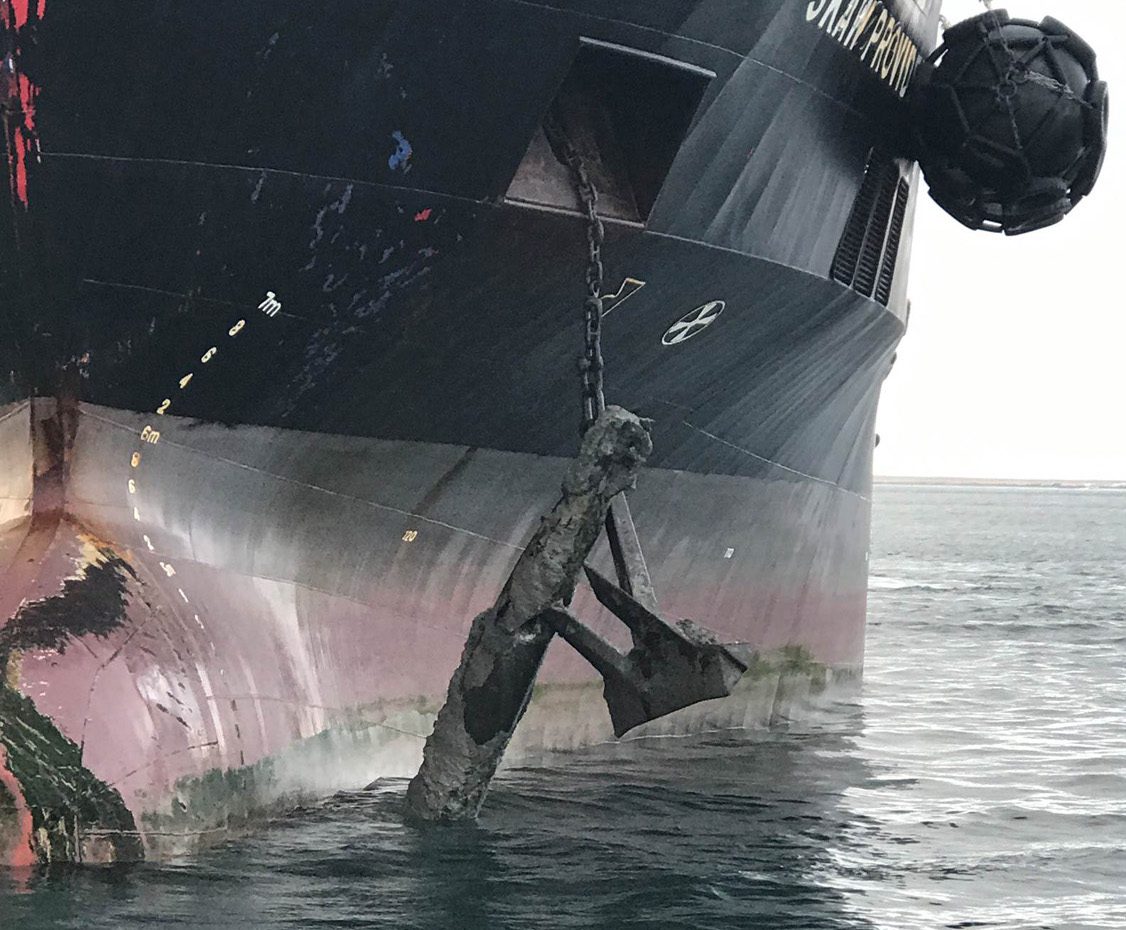Royal Navy Photo
A pretty scary situation in the southern England last Friday as a tanker pulled up an old test torpedo when it raised its anchor in Portland.
A diving unit was dispatched to the scene where they immediately evacuated the majority of the crew from the Maltese-flagged MT Skaw Provider. However, six crew members including the Master remained on board the vessel to respond in case it had detonated.
A photo of the torpedo shows that the old ordnance pierced by the fluke of the anchor after it had been dragged up from a depth of around a 15-meters.
The tanker was carrying approximately 1000 tonnes of fuel or oil, according to the Officer in Charge of the Portsmouth-based Southern Diving Unit, Lieutenant Commander Jonathan Campbell.
“The fuel cargo was pumped into the aftermost possible tanks to reduce the effects of any explosion, and fire hoses were charged and ready to deploy if needed,” said Campbell. “We directed the ship to use her other anchor to steady her, before lowering the fouled anchor, and the torpedo, to several metres below the waterline.”
Royal Navy divers, who are Explosive Ordnance Device (EOD) Specialists, had to then approach the torpedo and remove it in a safe manner.
“EOD Operators are obliged to treat these items as ‘live’ and hazardous until it can be disproved otherwise,” said Lt Cdr Campbell. “The entire job was conducted in this way.
“Working parts inside the torpedo could be seen from where the anchor fluke had ruptured it. The entire bomb disposal team were professional and got on with the job in hand,” Campbell said.
Once the torpedo was released, the team then took it to a safe area, lowered it to the seabed and destroyed it, the Royal Navy said.
The entire operation took about seven hours from start to finish, and the ship was released at around 5 p.m. on the same day.
“They were thoroughly relieved to be separated from their unwelcome burden,” said Campbell.
The Royal Navy said the torpedo was a British made device believed to have come from a test range that existed for Portland until the 1980s and had so far remained undetected. “While they vary in the type of hazard they represent test torpedo can contain highly flammable propellant,” the Royal Navy noted.
The 4,279 dwt Skaw Provider was built in 2005.
Tags:

 Join The Club
Join The Club











